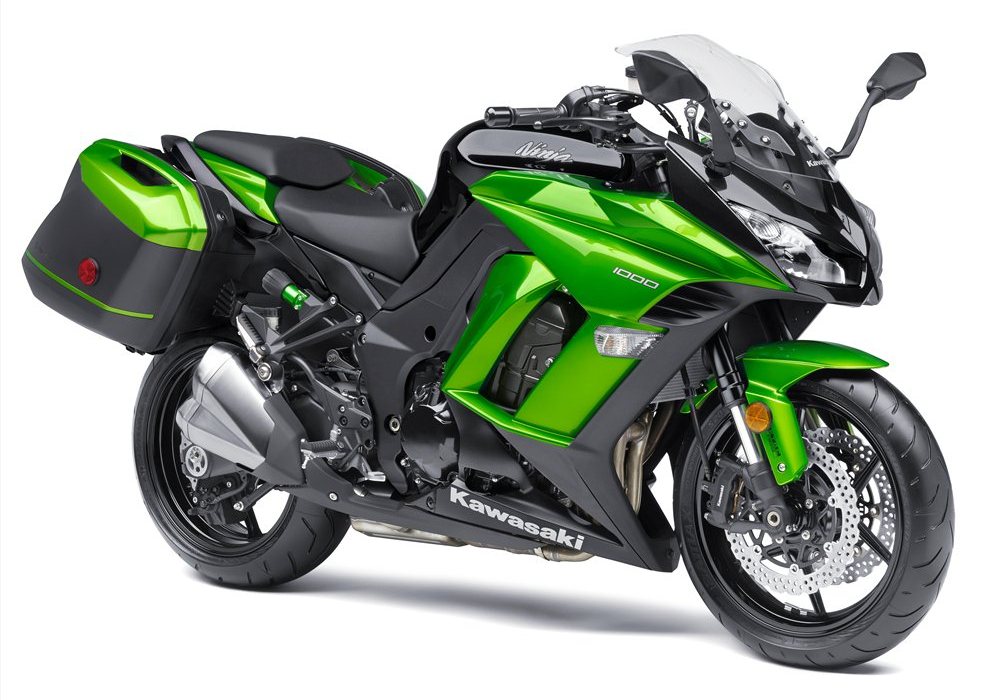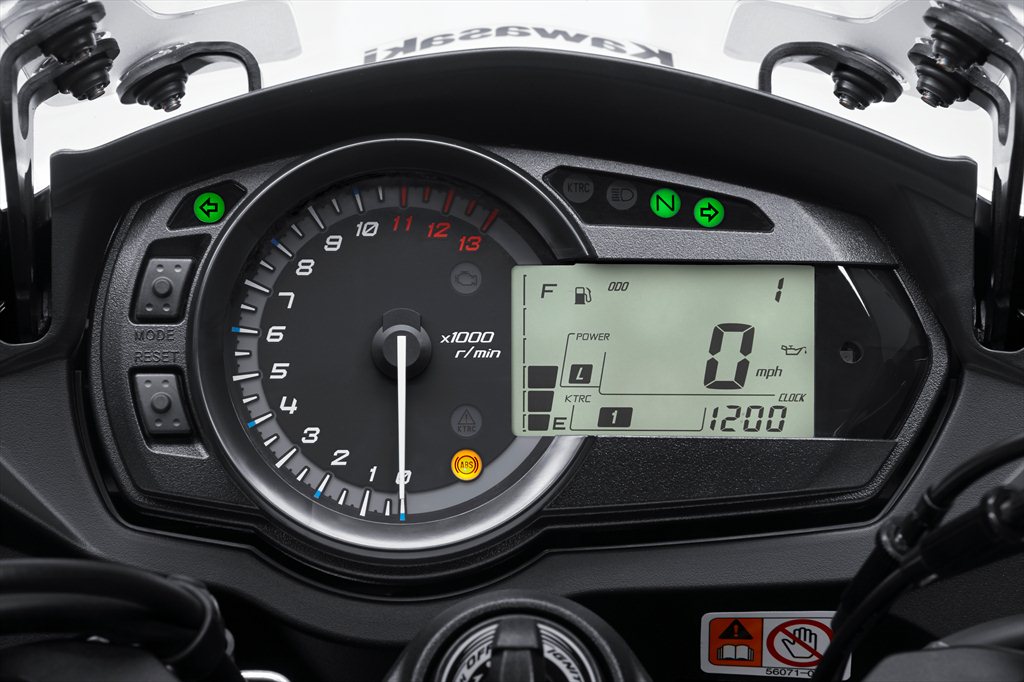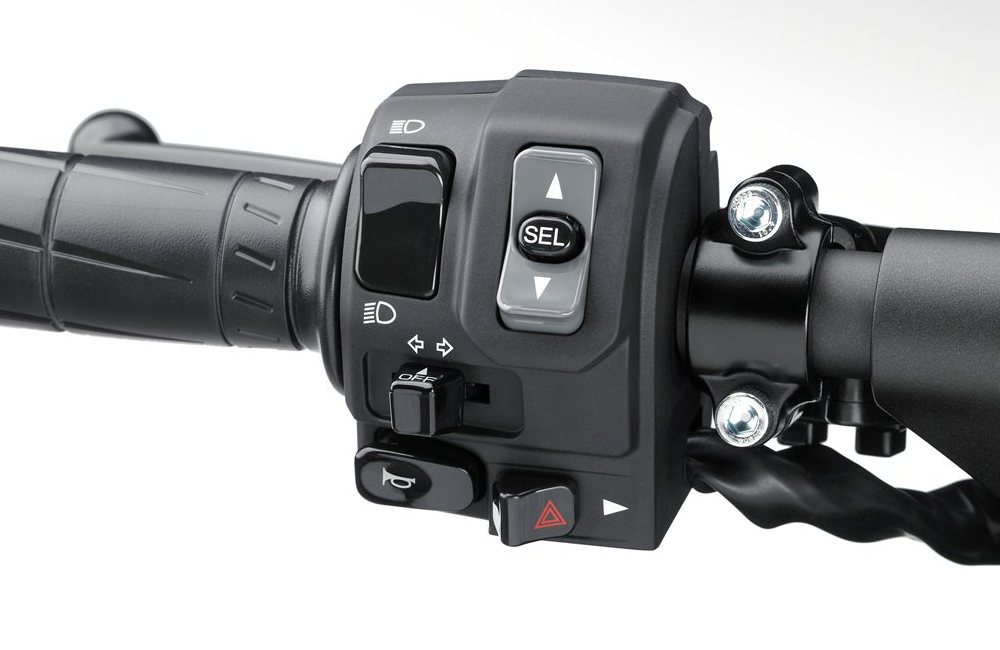The caramel-topped apple pie at the Julian Pie Company comes deliciously close to being too much.
As a daily agenda goes, this one was pretty good. The Southern California morning was still young and I had use of a new 2015 Kawasaki Ninja 1000 and just two loose objectives: get a feel for this bike, which I’ve been interested in for some time but hadn’t yet been able to ride, and meet up later in the day to talk shop with an old business friend I hadn’t seen in years.
To facilitate the first objective, I set for myself another totally arbitrary but pleasant goal: Get a slice of apple pie at the Julian Pie Company in Julian, Calif. That would give me the chance the ride the Ninja on everything from traffic-clogged I-5 to the twisty curves and hairpins just east of Julian on Route 78. With just one day to spend with the Ninja, I wanted to make the most of it.
So what’s the verdict? Well, the caramel-topped apple pie is a little over the top but great, just the same. But if you’re here, you’re no doubt more interested in the motorcycle review than the pie review. That’s not such a short story, even though I didn’t have enough time with the bike to write what I would consider a full review. The Ninja 1000, it turns out, was just what I hoped it would be, in some ways, and not what I expected in others.
The Kawasaki Ninja 1000: the facts
The Ninja 1000 is essentially a sport bike made more comfortable and useful for touring. On paper, that sounds perfect for me. Though I’ve now reached the age where most guys have traded in their sport bikes for a comfy touring rig, I stubbornly want the best of both worlds. I want the performance, light weight and high-quality brakes and suspension components found on my Triumph Daytona 675, along with the wind protection, locking and weatherproof saddlebags and comfortable ergonomics I need when I have to be at work 500 miles away in Philadelphia tomorrow morning. I cobbled together a reasonable facsimile with my Kawasaki Versys and some aftermarket accessories, but the Ninja 1000 promises a lot more performance and a more slickly integrated package from the factory.

The 2015 Kawasaki Ninja 1000 fitted with the optional saddlebags.
The Ninja 1000 uses the same 1,043 cc inline four-cylinder engine that’s also found in the naked Z1000 and the Versys 1000 LT. The engine is tuned a bit differently in each of those three models, however, and in the Ninja 1000, most dyno charts show peak horsepower in the neighborhood of 125. While that doesn’t match the flashier numbers of the race replica literbikes, which are making 40 more horsepower, the Ninja 1000’s higher torque at lower engine speeds means it’s just as fast at normal street speeds.
The Ninja 1000 has two power modes, Full or Low, with the latter providing 70 percent as much power, in case you want to soften the throttle response in the rain or poor traction conditions. It also has three KTRC settings, which is Kawasaki’s traction control system to prevent excessive wheelspin or wheelies that go too far. The Ninja 1000 also comes with ABS, a radial-mount monobloc caliper squeezing 300 mm petal-style discs, and a radial-pump front brake master cylinder, so Kawasaki didn’t cheap out on the stopping power.
MSRP is $11,999 for 2015 and unchanged for 2016. The optional saddlebags cost $1,269.75, which isn’t cheap, but if you’re looking at this kind of bike, you’re probably going to want bags. The mounting system is nicely integrated, so the bike looks “normal” with or without the bags. They’re waterproof, can be matched to your ignition key, and look right on the bike. If I bought this bike, I would absolutely buy the bags.
Giving the Ninja a workout on Route 78 east of Julian, Calif.
The Kawasaki Ninja 1000: the ride
I picked up the Ninja at Kawasaki HQ after spending a week on the Versys 1000 LT. I asked to have a day with the Ninja mainly because I wanted to see how the two bikes compared. Many of my impressions of the Ninja were colored by my week with the Versys.
The Versys 1000 LT is a bigger, more powerful, more refined version of my old Versys. Frankly, it’s a better bike than I expected. The Ninja, in one way, was exactly what I expected. It feels like a comfortable sport bike, and as I mentioned above, that’s exactly what I’m looking for. The two bikes feel quite different, despite sharing numerous parts.
I appreciated the Ninja’s lower seat (32.3 inches) and lower weight (claimed 509 pounds). While many touring riders want a perfectly upright riding position and lots of legroom, as the Versys 1000 offers, I find the Ninja 1000’s riding position to be perfect. I don’t mind the tighter accommodations created by the higher footpegs, and the slight forward lean feels just right to me.
Throttle response was smooth and power is abundant everywhere on the tach dial. This is not the peaky inline-four you may be imagining. Kawasaki made sixth gear a little taller when the model was last revised, and an indicated 75 mph in sixth gear is now about 5,000 rpm, which means you can just twist the throttle and squirt ahead in traffic situations on the highway, or you can downshift and squirt ahead even faster.
This was what I expected from the Ninja: a sport bike made more useful for touring, with a sensible but sporty riding position and power available at a moment’s notice.

The Ninja 1000’s LCD display provides all the information you need except a gear position indicator. The fine print is hard to read, however, and almost constant reflections are an annoyance.
Then there were a few things I didn’t expect, and some of which I might not have noticed if I hadn’t spent so much time first on the Versys. The Ninja also has some rough edges, like a sport bike. The first thing I noticed was that it did not have the same smooth, light clutch pull as the Versys. While I loved the riding position, the Ninja 1000’s adjustable windscreen didn’t provide the wind protection I’d come to expect from riding the Versys, no matter which position I chose. Another small annoyance was the difficulty of reading the LCD display. Reflections were ever-present and the text beside the numbers, indicating which display was selected, was too small to read. Is that the trip odometer or the range until empty I’m looking at? If I lived with this bike day in and day out, I’d learn the order of the displays, I suppose, and it wouldn’t matter.

The switches are laid out nicely and easy to use. The gray switch lets you toggle through displays on the LCD screen and change the KTRC traction control and power mode settings.
On the positive side, other than the ordinary (as opposed to the Versys’s above average) clutch action, the controls worked well and were placed right where I felt they should be. Using the toggle switch on the left to scroll through displays or change the KTRC or power mode settings was simple and easy to figure out.
One thing that requires some discussion is the handling. On the highway, the Ninja feels stable, but as other reviewers have noted, the bike has an unusual tendency in the tighter corners. I think Motorcycle Consumer News described it best when saying it felt like the front tire was low on air pressure. In faster transitions through tighter corners, the Ninja is a little more reluctant to turn and sometimes needs unexpected pressure on the handlebar to hold a line.
More than one reviewer suspected the blame belonged on the unusual 190/50-17 size of the Bridgestone rear tire. And in fact, many Ninja 1000 owners have switched to a more conventional 190/55-17 rear tire and found that the slightly raised rear end greatly improves the steering. Some have gone further and adjusted the front fork tubes in the triple clamp.
Having read about this handling trait in advance, my impression was that it was less severe than I expected. It’s not something that would stop me from buying the bike, but I definitely would experiment with different tires as soon as the stock rear was approaching replacement.
I rarely change the stock exhausts on a motorcycle, but I’d be sorely tempted to if I owned the Ninja 1000. Not only is this exhaust ugly to my eyes, but my heel occasionally bumped into the exhaust heat shield when I placed my feet in the sport riding position. A lighter, sleeker aftermarket option would be better, if I could find one that was not too loud.
Would I buy this bike?
After a day of riding, I met my friend, a very experienced motorcycle writer, and we started talking about bikes, naturally. He asked me which of the two bikes I’d just ridden, the Versys 1000 LT and the Ninja 1000, I’d buy.
The answer is not so simple.
The Versys 1000 LT is, I feel, the better bike. But I don’t want its extra inch of seat height and extra 50 pounds over the Ninja, nor its bolt-upright riding position. The Ninja is the comfortable sport bike I’m looking for, but it retains a bit too much sport bike raucousness. On a 500-mile day, smooth, drama-free performance is what I appreciate most. The Ninja was never buzzy or tiring during the 250 miles of riding I did that afternoon, but the lesser wind protection and the sport bike seat would probably start to grate on me after a few hundred miles. Plus, for those times I ride two-up, the passenger seat is way too much sport bike sleek and not near enough sport-touring practical.
The Ninja 1000 is a willing partner for a quick tour of some Southern California back roads.
So while I have to say I enjoyed my short ride on the Ninja 1000, and I could definitely see living with one, I’m still searching for that sweet spot, a magical motorcycle that combines sport bike performance, touring bike comfort and practicality, and a big dose of refinement, all in the right proportions. The Ninja 1000 is close, but perfection is still just beyond the horizon.

I picked up a left over 2014 for $9800 with bags, this is a lot of bike for the money. I have 6k on it and changed the rear tire when it wore out and raised the forks in the triples a little so it handles sharp. Ninja I can ride all day. The Ninja1000 forum is smaller than most, but still good info.
One postscript. I have since learned that it is possible to install the Versys 1000 clutch in the Ninja 1000, which makes sense, since it’s the same engine. The parts cost around $400. That’s a mod I would definitely consider if I owned this bike, just to get the improved feel and slipper clutch.